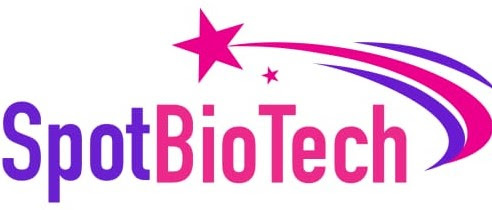In our increasingly
interconnected world, the ability to accurately and rapidly detect and analyze
various substances has become essential in fields ranging from healthcare to
environmental monitoring. Biosensors have emerged as powerful tools at the
intersection of biotechnology and sensing technologies, enabling the detection
of specific molecules and biological interactions. In this blog, we will delve
into the fascinating world of biosensors, exploring their concepts,
applications, benefits, challenges, and the exciting potential they hold for
transforming industries and improving our quality of life.
Understanding
Biosensors
Biosensors are devices that
combine biological components, such as enzymes, antibodies, or cells, with
transducers to convert the biochemical information of a biological interaction
into a measurable signal. This signal can be electrical, optical, or even mechanical
in nature. Biosensors essentially enable the translation of complex biological
processes into quantifiable data that can be easily interpreted and analyzed.
Key
Components of Biosensors
1.
Biological Recognition Element: This is the heart of a biosensor
and provides the specificity and selectivity to the sensor's response. It
interacts with the target molecule and triggers a measurable signal.
2.
Transducer: The transducer converts the biological
interaction into a quantifiable signal. Examples include electrochemical,
optical, and piezoelectric transducers.
3.
Signal Processing Unit: The signal generated by the transducer
needs to be amplified, processed, and converted into a meaningful output.
Signal processing units are often integrated into the biosensor system.
Types
of Biosensors
1.
Optical Biosensors: These biosensors use light as a means to
detect and quantify biological interactions. Surface plasmon resonance (SPR)
and fluorescence-based biosensors fall under this category.
2.
Electrochemical Biosensors: Electrochemical biosensors measure
changes in electrical properties, such as potential or current, resulting from
a biological interaction. They are commonly used for glucose monitoring and environmental
sensing.
3.
Piezoelectric Biosensors: These sensors measure changes in mass
or viscoelastic properties, converting them into electrical signals. Quartz
crystal microbalance (QCM) biosensors are a prominent example.
Applications
of Biosensors
1.
Medical Diagnostics: Biosensors are extensively used in medical
diagnostics for detecting biomarkers related to diseases such as diabetes,
cancer, infectious diseases, and cardiac conditions.
2.
Environmental Monitoring: Biosensors play a crucial role in
monitoring environmental pollutants, pathogens in water sources, and other indicators
of environmental health.
3.
Food and Beverage Industry: Biosensors are employed to detect
contaminants, allergens, and pathogens in food products, ensuring food safety
and quality.
4.
Drug Development: Biosensors facilitate drug discovery by
providing real-time data on the interaction between drugs and target molecules.
5.
Bioprocess Monitoring: In biotechnology and pharmaceutical
industries, biosensors are used to monitor fermentation processes, enzyme activities,
and other bioproduction parameters.
Benefits
of Biosensors
1.
Sensitivity and Specificity: Biosensors offer high
sensitivity and specificity, enabling the detection of target molecules even at
very low concentrations.
2.
Real-Time Monitoring: Many biosensors provide real-time or
near-real-time data, allowing for immediate decision-making and intervention.
3.
Portability: Miniaturization and portability of
biosensors have expanded their use in point-of-care testing and field
applications.
4.
Reduced Sample Volume: Biosensors often require smaller sample
volumes compared to traditional methods, minimizing the need for sample
preparation.
5.
Cost-Efficiency: In many cases, biosensors offer a
cost-effective solution by reducing the need for complex equipment and
extensive laboratory analyses.
Challenges
and Considerations
1.
Biological Complexity: The biological components of biosensors
can be sensitive to environmental conditions, affecting their accuracy and
reliability.
2.
Standardization: The lack of standardized protocols can lead
to variations in biosensor performance, hindering their widespread adoption.
3.
Stability and Shelf Life: The stability of biological recognition
elements and the shelf life of biosensors can be a challenge, especially for
long-term applications.
4.
Interference: Biosensor signals can be influenced by
non-specific binding or interference from other molecules present in the
sample.
Future
Directions
The future of biosensors is
ripe with exciting possibilities:
1.
Multi-Analyte Detection: Advances in biosensor technology are
leading to the development of biosensors capable of detecting multiple analytes
simultaneously.
2.
Nanotechnology Integration: Integration of nanomaterials and
nanotechnology into biosensors can enhance sensitivity and miniaturization.
3.
Wearable Biosensors: Wearable biosensors offer continuous
monitoring of health parameters and early disease detection.
4.
Implantable Biosensors: Implantable biosensors could revolutionize
personalized medicine by continuously monitoring patient health and drug
responses.
5.
Synthetic Biology and Biosensors: The combination of
synthetic biology and biosensors could lead to the creation of engineered
living organisms that detect and respond to specific molecules.
Conclusion
Biosensors represent a
remarkable convergence of biotechnology and sensing technologies, offering a
bridge between the complex world of biology and the quantifiable world of data
analysis. From healthcare to environmental monitoring, these devices are
transforming industries and enabling us to make informed decisions with speed
and accuracy. As technology continues to advance, the potential applications of
biosensors are boundless, holding the promise of revolutionizing medical
diagnostics, improving our understanding of biological processes, and contributing
to a safer and more sustainable world. While challenges remain, the benefits of
biosensors are undeniable, making them a pivotal tool in the ongoing quest for
progress and innovation.



Biosensor technology is a great revolution. Nice content
ReplyDelete